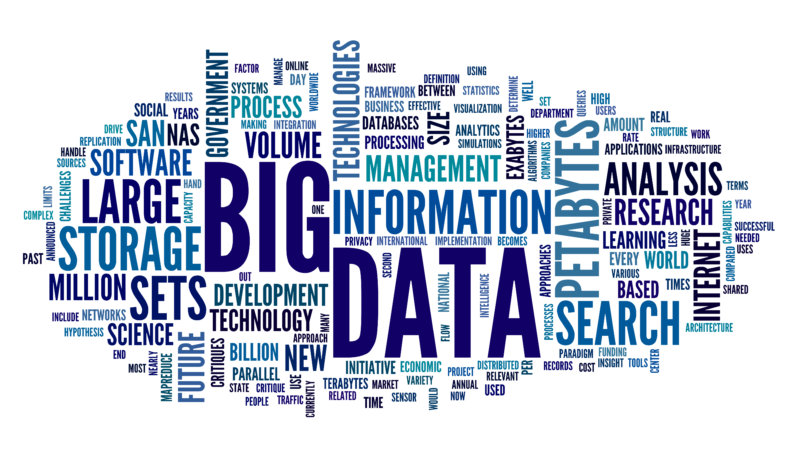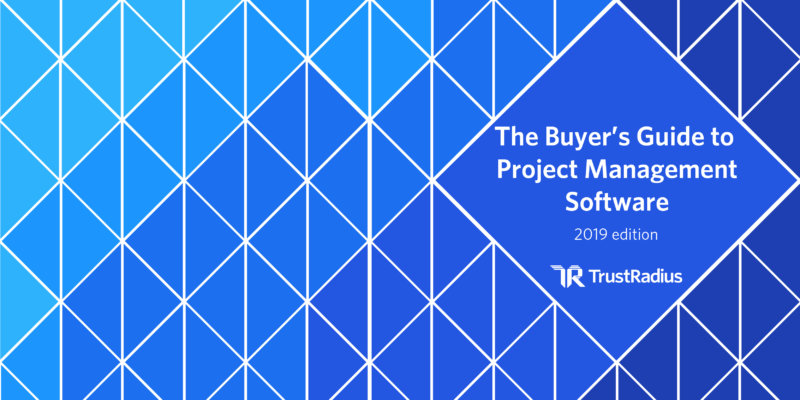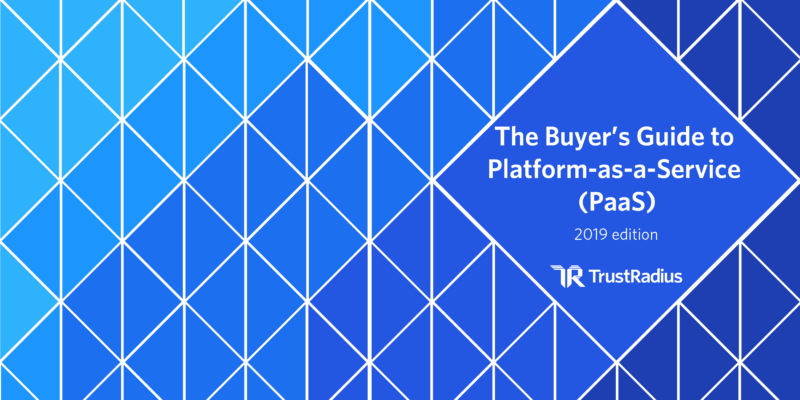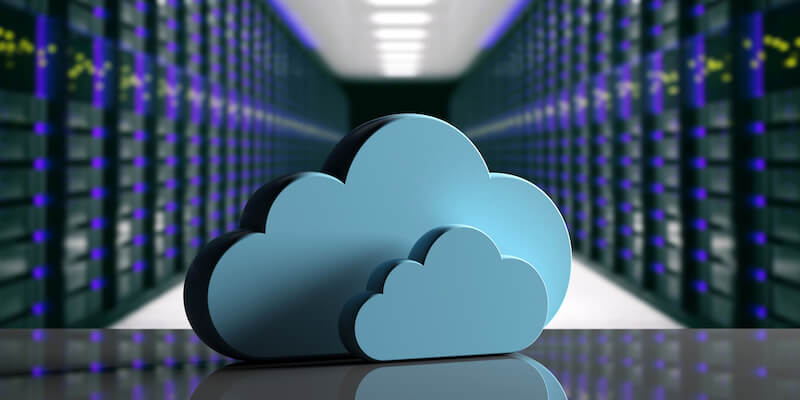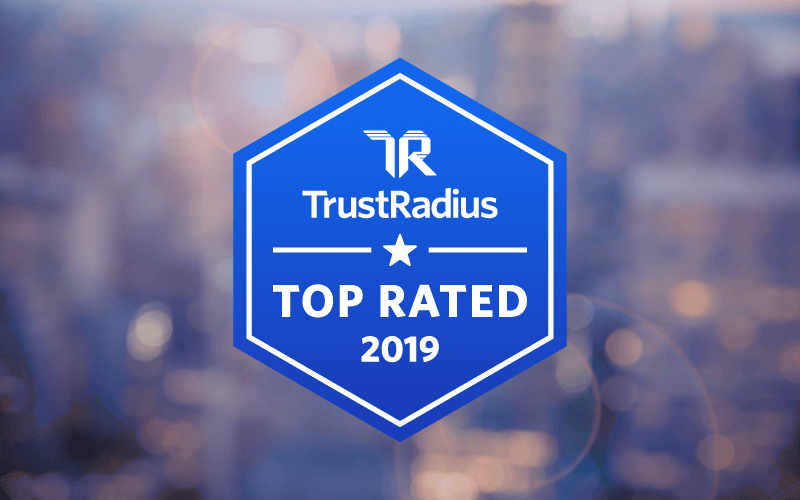B2B Connection
Information and resources for technology buyers
Anyone who’s bought consumer electronics understands the confusion of trying to compare features and specs that you only half-understand in the first place. Even researching which TV to get now requires a technical dictionary to discern between the different versions of “HD perfection,” audio setups, and smart configurations. Folks looking for business software can face just as much of an uphill tech jargon battle. In order to help translate the terminology that buyers find in Integration Platform as a Service (iPaaS) product descriptions and vendor sites, here are some of the features and concepts that tend to cause buyer confusion. In an effort to help you focus on what matters, we also discuss which iPaaS buzzwords you should care about as buyers and why Multi-Tenant Architecture Multi-tenancy is a core feature of what differentiates iPaaS from other integration solutions. Broadly speaking, multi-tenant architecture is when multiple users/customers use a single instance of a software simultaneously. For iPaaS, it means multiple clients or users use the same platform instance which the vendor hosts. Rather than buyers hosting the platform themselves, they simply access a vendor-hosted platform. What It Means for Buyers: If you’re deciding whether you need an iPaaS at all, […]
Today’s Community Contributor is Joel Tanzi, Software Engineer at Engaged Technologies. Joel has been working as a web and application developer with substantial experience building out APIs, front-end websites scaled for mobile use across a variety of frameworks and technologies. He has written several detailed reviews on TrustRadius of the tools he uses at work. Here, Joel shares with us his favorite VS Code extensions. If you are a software engineer, or manage a software engineering team, there’s a very good chance you are interacting with Microsoft’s Visual Studio Code on a daily basis. Despite its namesake, VS Code is not related to Microsoft’s premier development product, Visual Studio. It is focused on being a code editor rather than a full-featured software development product, so it comes as a surprise to some that software engineers will often use it to the exclusion of most everything else in their development toolbox. One reason for this is VS Code’s rich and densely-populated marketplace of extensions that add on many powerful features to VS Code and integrate it with many other services. These extensions: make the coding experience much more efficient aid in preventing coding errors facilitate collaboration amidst teams offer bright and […]
In Data Center Backup, flexible deployment entails working with a vendor who supports both on-premise and offsite data protection across geographically dispersed regions if necessary. Additionally, flexible deployment allows for operational scalability and changes within your virtual and physical environments. If flexible deployment is one of your top criteria, you may want to consider one of these products. Here are the top 6 Data Center Backup solutions for flexible deployment (based on their ratings for this feature on TrustRadius): Rubrik – 9.5 Veeam Availability Suite – 9.5 Barracuda Backup – 9.4 Commvault – 9.1 Veeam Backup & Replication – 8.8 Bacula Enterprise – 8.8 Coming in at a rating of 9.5 for flexible deployment are Rubrik and Veeam Availability Suite, the leaders of this pack. A quick, pain-free deployment is ideal for IT teams for the purpose of maintaining SLAs. While small environments can operate using simple deployments, IT teams with geographically dispersed virtual environments will require more complicated, distributed deployments with flexibility. Below, we share what TrustRadius reviewers have to say about carrying out their deployment scenarios with these two products. Rubrik First up is Rubrik, a software platform that provides backup, instant recovery, archiving, search, analytics, compliance, and […]
Comparing enterprise-level software is hard. Trying to get a straight answer that you trust from vendors can feel even harder. In a world where everything sounds like marketing spin, who can you trust? The people who use the software. Enterprise iPaaS (EiPaaS) can be differentiated by the types of systems they specialize in integrating or their support for API developers. We’ve sifted through users’ reviews on TrustRadius to give you an eagle-eye view of their experiences with EiPaaS. These insights include products’ most common demographics, top pros and cons, and what makes each product stand out. These products were also highlighted in the EiPaaS market breakdown, so if you need a primer on any of the products, read more here! Dell Boomi: Ideal for ETL or MSP Dell Boomi, like most EiPaaS, has a user base with backgrounds predominantly in computer science or IT. There is a small minority of users in finance and accounting, as well as a larger minority of consultants who implement and manage Boomi for clients. Boomi stands out with users for its ETL (Extract, Transform, Load) capabilities. These users also recognize robust support from Boomi’s user community. Boomi is also comparatively easy and quick to […]
What is a business buzzword, and what makes them the worst? Words become annoying buzzwords when they get overused, frequently misused, or are just plain vague. Terms with a perfectly good plain-English counterpart are especially hated. It’s a classic mark of jargon! If there’s a different word that you would say if you weren’t at work, check yourself: you’re probably using business jargon. Based on a recent TrustRadius survey of over 700 professionals, here is the ultimate list of the 119 most-hated business buzzwords. These corporate cliches, in order of most-mentioned to least-mentioned, are full of juicy jargon, vague terminology, obscure metaphors, and problematic turns of phrase. The 119 Worst Business Buzzwords for 2020 Synergy Think outside the box (and other variations, like “step out of the box,” an “out of the box” idea, etc.) Take it offline Circle back Low-hanging fruit At the end of the day Cloud, and cloud-based To not know what you don’t know Big Data Move the needle Leverage Agile Best Practice Digital transformation Deep dive Bandwidth Customer journey Moving forward–and its close cousin “going forward” Next level, up-level, level up Reach out Touch base Wheelhouse Disruptor Alignment / Aligned Right Bottom line Acronyms (FYI, […]
The promise of project management software – having your whole team collaborating together within one centralized platform that houses all your project materials – sounds like a dream come true. Unfortunately, reality doesn’t always live up to this dream. Personally, I’m currently using three different project and task management tools, each serving a slightly different purpose. And according to our research, I’m not alone: 58% of project management users use more than one tool. This simple insight can make finding the right project management software for your team unexpectedly difficult. There are also hundreds of tools to choose from and a wide range of project management methodologies to consider. Though project management software, also called ‘work management’ or ‘collaboration and work management software’, has evolved to meet the needs of today’s workforce, these factors can make searching for a new software solution even more time consuming. One key trend is that many popular products are now web-based. A few legacy products, like Microsoft Project and JIRA, still offer on-premise deployment options. Web-based project management is definitely a positive development, as it makes it easier to connect remote workers with the rest of their team. Yet this also makes the market […]
No one understands a product better than the people who use or manage it. It’s a big reason why buyers find user reviews to be more trustworthy and influential than many other sources of info. Reviewer insights can be particularly beneficial when trying to decide between Zapier, IFTTT, and PieSync, which are all iPaaS options for small businesses, teams, or individuals. To sum it up: according to reviewers, the key difference between IFTTT, Zapier, and PieSync is the breadth vs. depth and specificity of their integrations. Specifically: Zapier offers a wide range of integrated apps for many business uses IFTTT focuses on integrations for marketing, social media management, and IoT integrations for consumers PieSync specializes in two-way contact syncing What make these iPaaS products unique? These iPaaS products stand in a segment of their own because of their focus on small-scale users. Their users include individual use, small businesses, and teams within a larger organization. This focus on small-scale users necessitate robust libraries of prebuilt integrations that don’t require technical experience. IFTTT, Zapier, and PieSync all have no-code interfaces so they can be as easy to use as possible. They are all designed for, and used primarily by, marketing or […]
As integration needs become more complex and burdensome, the Integration Platform as a Service (iPaaS) market has matured to offer products targeted at midsize companies. These companies require more customization and integration with some enterprise products than what smaller-scope products like IFTTT and Zapier specialize in. However, they also lack either the IT labor force, budget, or integration requirements to effectively manage or need the functionality of Enterprise iPaaS products like Mulesoft or Oracle. If this sounds like your organization, here’s a primer of what mid-market iPaaS services can offer you, and breakdowns of some of the main players in the mid-market space. What Mid-Market iPaaS can Do Mid-market iPaaS is a less clear-cut market segment compared to EiPaaS and small-scale vendors, and usually includes some characteristics of products on both ends of the market spectrum. This wider range of functionality emerges from servicing mid-market companies who are also more variable in size and scope than small businesses or enterprises. The cloud-based nature of iPaaS is already well suited for differently sized companies with different levels of IT support and labor on hand. Like smaller vendors, mid-market vendors include workflow automation and codeless interfaces for citizen integrators. Mid-market vendors have […]
A little advice never hurt anyone, right? Especially advice that’s been supported by countless leaders and experts. But even tried-and-true advice deserves a discerning eye. In the data center backup world, the 3-2-1 Backup Rule is considered the standard model for how organizations should backup their data. What is 3-2-1 Backup? 3-2-1 Backup refers to: keeping 3 separate copies of your data, storing the copies on at least 2 different types of media, and keeping at least 1 copy off-site. This has served many IT teams well over the years. But these days, 3-2-1 Backup is not as universally supported as some data center backup vendors may claim. In this blog post, we’re giving 3-2-1 Backup the ole Diogenes treatment and examining exactly what it is, and if it’s really as fail-proof of an approach to data center backup as so many think it is. Firstly, keeping three copies of your data means that in a worst-case disaster scenario, whatever super hacker or storm you face will have to take out three separate copies of your data to really immobilize your organization. The probability of this happening is low, and given standard risk assessments, three copies are enough. In terms […]
As the business world and its technologies become more complex and interconnected, enterprises are often at the forefront of what technology can enable—and what headaches it can cause. This is particularly true when it comes to integrating the myriad applications in use at any time (on average, 464 applications) and making the most of the data available to your organization. Fortunately, Integration Platforms as a Service (iPaaS) have grown to address the needs of enterprises, leading to a new segment of Enterprise-tier iPaaS products (EiPaaS). What is EiPaaS? Not all EiPaaS feature lists are identical, but there are some strong trends that distinguish these products from SMB-level products. While smaller-scale vendors focus on prebuilt integrations between various applications and services, enterprise iPaaS allow for more customizable integrations between data formats and protocols. The depth of the integration grants users more agency and autonomy to integrate nonstandard programs or data sources together. EiPaaS also supports better core integration practices. It integrates data in real time and provides robust data security and protection (which has become more standard with the normalization of GPDR compliance for international vendors). EiPaaS has also normalized support for developers to build and integrate microservice-structured architectures and data […]
Data security will always be one of the most important topics to IT teams whether they’re storing data in the cloud or on-premises. In some highly-regulated industries such as finance and healthcare, on-premise backup is required for compliance reasons and, for many, having data located in-house provides a certain peace of mind. However, with cloud backup being touted as a no-brainer alternative to traditional on-premise backup, IT leaders cannot ignore its promises of improved disaster recovery time and cost savings. Wondering what the key differences between cloud and on-premise backup are? Sit tight, we’ll explain exactly what those are. What is on-premise backup? On-premise backups are those in which a copy of data is saved onto in-house storage devices. Examples of on-premise backup solutions are network-attached storage, storage servers, and tape or disk backups. While most organizations traditionally begin with an on-premise solution because of its simplicity, a growing number of firms are beginning to discover cloud-based services as a more feasible and efficient alternative due to the following three factors: cost, recovery time, and security. When data is lost with on-premise backup, it is essential for IT teams to recover files or even entire hard disks. Recovery time differs […]
There are few things more frustrating than buying something new and finding out you’ve bought the wrong product after you completed the purchase. Most people who have moved into a new home have felt some buyer’s remorse about some aspect of their first lease or mortgage. What about that community pool you never touch? Or picking a third-floor unit with no elevator? Or (and here’s one I unfortunately relate to) discovering that none of the top sockets in any of the outlets work? This feeling can be just as real, and possibly more impactful, when looking for software. It’s important to understand which is appropriate for your company’s needs so you’re getting the best product for you. While Integration Platforms as a Service (iPaaS) all address integrations between various SaaS applications and data sources, the scale, capacity, feature list, and price of different market segments vary dramatically. Understanding these iPaaS market segments is crucial to any iPaaS purchasing decisions. The iPaaS market is best segmented by the client size vendors are targeting. The iPaaS vendor landscape can be divided into Enterprise vendors (EiPaaS), mid-market vendors, and vendors targeting small to mid-sized businesses. Enterprise iPaaS does it all EiPaaS vendors are […]
Platform-as-a-Service (PaaS) is one of the three predominant cloud computing models, along with Software-as-a-Service (SaaS) and Infrastructure-as-a-Service (IaaS). PaaS products play an important role in helping software developers to bring applications to market faster while releasing them from the complexity of configuring, managing, hardware resources. These platforms provide developers with much more automation that standard development environments, but at the cost of less granular control. There are many benefits to PaaS, but choosing the right solution for you and your company can be a challenge. To help equip software buyers with the knowledge they need to make the right choice, we’ve created the free Buyer’s Guide to PaaS. In the guide, you’ll learn the ins and outs of this complex software, tips you should consider when buying, and the scoop on the industry’s leading products. Understanding the Basics of PaaS There are three different types of PaaS which it is important to understand before making a platform choice: PaaS tied to a specific SaaS product: The platforms are tightly connected to a SaaS application, like Salesforce or Workday, and are designed for ISVs that wish to extend the platform by adding new capabilities. PaaS tied to an operating environment: The […]
Exploring the topic of backing up data can present a plethora of terms that may make even the most seasoned of professionals go “wait, what?” This theme crops up when discussing general data center backup versus endpoint backup: how are they different? A lot of data center backup solutions offer endpoint security coverage, and some don’t. And with endpoint backup, some of the leading software in this market can provide comprehensive data center backup coverage, but of course, not all of them do. In general, data center backup software refers to solutions that are used as part of an organization’s disaster recovery and business continuity efforts. Endpoint backup, on the other hand, refers to the storage and copying of data from users on “endpoints” such as laptops, desktops, phones, and tablets. If you still have questions about just what endpoint backup and data center backup are, there’s good news. We’ve got answers. What is Data Center Backup? Data center backup and recovery software is designed to provide business continuity and prevent critical data loss, even while data centers grow more complex. While backup solutions provide a disaster recovery solution, they may also be used for workload migration. Additionally, some data […]
For anyone working in tech, parsing through the alphabet soup of new and emerging software is a fact of life. New acronyms pop up everywhere! On top of that, understanding the differences between emerging products and existing software in integration technology is an uphill battle. iPaaS and ESB are great examples of this phenomenon. Historically, Enterprise Service Bus technology (ESB) bore the brunt of businesses’ integration demands. But the last decade has seen the rise of the Integration Platform as a Service (iPaaS) market to address the recent explosion in integration needs. While both product areas focus on integrating technologies across a business, there are important differences between iPaaS and ESB that should inform how you decide which is right for you. What are iPaaS and ESB? iPaaS hosts the integrations between a business’s applications and data sources on the cloud, particularly SaaS. If you’re asking “what is iPaaS?” and want to dive deeper into the basics, check out the iPaaS 101 here. But to fully understand iPaaS, it’s important to go back in time and look at ESB. ESB is an on-premise communication system that transfers data between components within a business. Originally, ESBs emerged to handle the integration […]
Data loss can happen at any moment, at any scale. It could be as innocent as unwittingly placing your laptop on a magnet and destroying your hard-disk drive (believe me, it happens), or a bad storm triggering a power surge and taking data stored on an on-premise backup with it. This is where cloud backup comes in—data stored off-site, securely. Using cloud backup, IT teams can send copies of their data via the cloud to another location. If data is compromised, they can restore information seamlessly while ensuring business continuity—effectively preventing a major IT crisis. However, data security and compliance become even more salient with cloud backup, given that cloud-based data is more vulnerable to cyber attacks. The responsibility of maintaining compliance is handed off to cloud backup vendors. Despite some security concerns, cloud backup adoption has accelerated in the past few years, owing to its cost savings and recovery features. According to our latest survey, 46% of data center backup users were already backing up to the cloud, and an additional 31% were planning on doing so. Cloud backup is more than just a cost-efficient way to store and save data! Here are some indelible reasons why cloud backup […]
Hitchhiker’s Guide to the iPaaS It’s undeniable that technology has grown in scale, complexity, and usage in the business world, at tech and non-tech companies alike. But this growth has raised concerns and questions of how to manage the myriad necessary applications. The answer? Integration Platform-as-a-Service (iPaaS) software. The exponential growth in data and corresponding communications between various software is quickly growing beyond anyone’s ability to manually process. With the average enterprise having 464 applications deployed, there is a clear and pressing demand for cross-application integration, communication, and automation. What is iPaaS? Fortunately, the last decade has seen the emergence of iPaaS to address the pain that comes from modern sprawling Software-as-a-Service (SaaS) environments. Broadly speaking, iPaaS are cloud-based platforms that host the integrations between various SaaS applications, as well as on-premise enterprise applications. By utilizing cloud-based structures and a visual user interface, iPaaS are relatively lightweight solutions to the dozens, hundreds, or even thousands of individual integrations that modern businesses need., And you don’t need to be a developer to use iPaaS – these tools strive to limit the need for prior coding experience. As an example, let’s say a customer contacts you looking for help with troubleshooting. Using […]
We are excited to announce the Top Rated Relational Databases for 2019! Top Rated awards showcase today’s top-of-the-line product in Relational Databases based solely on positive user feedback and satisfaction scores. These awards make the voice of the market the primary decider into the industry’s best products. Top Rated awards are the most trusted in the industry because they are never influenced by analyst opinion, the vendor’s size, popularity, or status as a TrustRadius customer. So without further ado… Here are the winners: Oracle Database 12c Oracle’s 12c database was the company’s first cloud-ready relational database. It is available free on a developer license, allowing users to download and use the database for development, research, and learning purposes. Released in 2013, Oracle Database 12c remains available and commonly used. It offers multitenant architecture, native JSON, and in-memory column store. On TrustRadius, most reviewers come from enterprises (74%). Reviewers appreciate its ability to handle large quantities of data and superior tools supporting data access control, data warehousing, and other features that set 12c apart such as SQL Developer, Oracle Data Guard, pluggable databases, and its multitenant architecture. “[Oracle Database 12c] supports our primary OLTP functions, as well as BI and warehouse. […]
We are excited to announce the Top Rated Application Performance Management (APM) Software for 2019! Top Rated awards showcase today’s top-of-the-line products in APM Software based solely on positive user feedback and satisfaction scores. These awards make the voice of the market the primary decider into the industry’s best products. Top Rated awards are the most trusted in the industry because they are never influenced by analyst opinion, the vendor’s size, popularity, or status as a TrustRadius customer. Here are the winners: Dynatrace Dynatrace is a cloud-based, full-stack APM platform. It uses a deterministic AI engine at its core to interpret data and perform fault-tree analysis. The platform automatically discovers and monitors microservices, traces performance at the code level, and tracks CI and CD builds. User experience tools analyze user data and emulate user behavior to find and resolve pain points. Dynatrace’s auto-remediation system can optimize performance and fix issues before they become noticeable to users. A large majority (74%) of Dynatrace users on TrustRadius are from enterprise-level organizations. Reviewers praise Dynatrace for its powerful root-cause analysis capability, strong visualization tools, and shareable dashboards. “Dynatrace enables us to stay ahead of our students and know about impending problems before they […]
We are excited to announce the Top Rated Data Warehouse Software for 2019! Top Rated awards showcase today’s top-of-the-line products in Data Warehouse Software based solely on positive user feedback and satisfaction scores. These awards make the voice of the market the primary decider into the industry’s best products. Top Rated awards are the most trusted in the industry because they are never influenced by analyst opinion, the vendor’s size, popularity, or status as a TrustRadius customer. Here are the winners: Snowflake Snowflake is a data-warehouse-as-a-service (DWaaS) product. It supports both structured and semi-structured data, such as CSV, XML, and JSON files. Snowflake scales efficiently, with separate resources for metadata processing and querying. Its pricing for computing, storage, and cloud services are also separated, helping customers fit the service to their needs. Snowflake offers multiple levels of data security, including support for HIPAA needs. A sizable majority (62%) of Snowflake users on TrustRadius are from midsize companies. Reviewers value the product’s zero-copy cloning feature, speed at large scales, and flexibility. “Snowflake is great when you need to store large amounts of data while retaining the ability to query that data quickly. It is very reliable and allows for auto-scaling on […]


